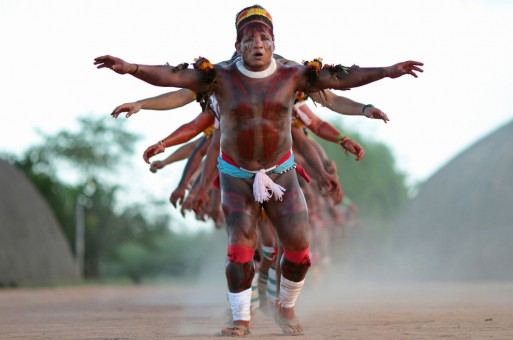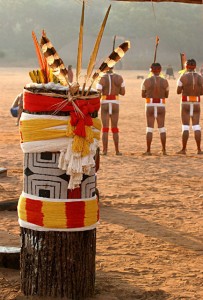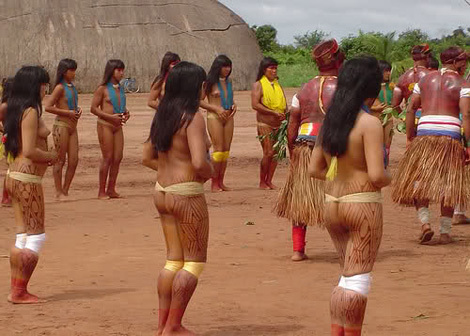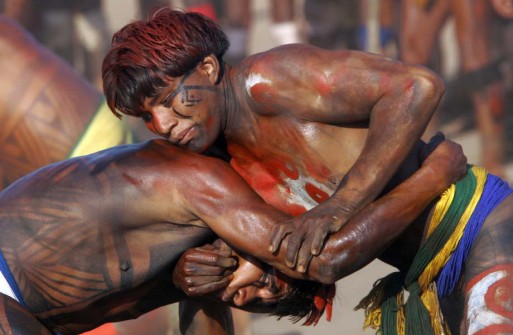Every August, the indigenous Indian tribes of Brazil’s Xingu River National Park gather together to celebrate the Quarup ceremony, a festival honoring the notable members of the tribes — such as the great leaders, warriors or descendants of nobility — who have died within the past year. The organizers of the Quarup comprise of nine ethnic tribes, whose residences are spread out among about 30 villages in the Alto Xingu region. Through the careful organization and planning of these tribes, the Quarup holds a reputation as the best-known and most popular indigenous ceremony throughout the entire continent of South America.
Therefore, the honorable ceremony remains solely reserved for those directly descended from Mavutsinim.
Quarup traces its origins to a story in the Xingu Indian mythology where their creator, Mavutsinim, walked the Earth and proceeded to teach his sons this tradition. Therefore, the honorable ceremony remains solely reserved for those directly descended from Mavutsinim.
Quarup is far from a quiet ceremony where people get together to mourn the losses of those notable members of their community. The ritual, which lasts a few days, keeps the tribes joining together to mourn very busily with a wide range of activities — both joyful and somber ones — from start to finish. Music plays an important role throughout the festival. Mourners honor the dead through weeping, singing and playing maracas they have made from calabash gourds around the tree trunks that represent the honorees. These trunks are also called “quarups” and are planted on the village floor. Family members of those who have died spend time painting and decorating them prior to lighting small fires around them and commencing the honoring through music.
These young girls now must choose their partners for marriage and this gathering of all the tribes provides ample exposure.
While Quarup’s main focus has to do with honoring the notable dead, the annual festival also serves as the time for the presentation of all girls from all the Xingu Indian tribes who have experienced menstruation for the first time since the last event. These young girls now must choose their partners for marriage and this gathering of all the tribes provides ample exposure. Therefore, they tint their ornament-adorned bodies and dance to honor the dead in front of all the attendees.
To conclude the Quarup, the tradition of huka-huka fighting occurs. Huka-huka is a type of folk wrestling that originated by the Xingu people from the state of Mato Grosso. Participants start the process on their knees and the goal to win involves whoever succeeds in lifting his or her opponent and then knocking him or her to the ground.
Although the ceremony might be reserved exclusively for the most notable of the Xingu people, the mélange of rituals demonstrate how important participating in different types of activities — whether it be decorating a tree trunk, singing or huka-huka fighting — can be for those going through the grieving process. In addition, doing them with members from your community, who are also mourning, can greatly help you feel as though you are not alone with your feelings.

 Quarup: A Festival for the Notable Dead from the Indigenous Indian Tribes Living in Brazil’s Xingu River National Park
Quarup: A Festival for the Notable Dead from the Indigenous Indian Tribes Living in Brazil’s Xingu River National Park






 “Hand to Earth” by Andy Goldsworthy
“Hand to Earth” by Andy Goldsworthy
 Trans Remembrance Project Provides a Community of Grieving
Trans Remembrance Project Provides a Community of Grieving
 Caring for a Dying Loved One? Be Gentle With Yourself.
Caring for a Dying Loved One? Be Gentle With Yourself.














